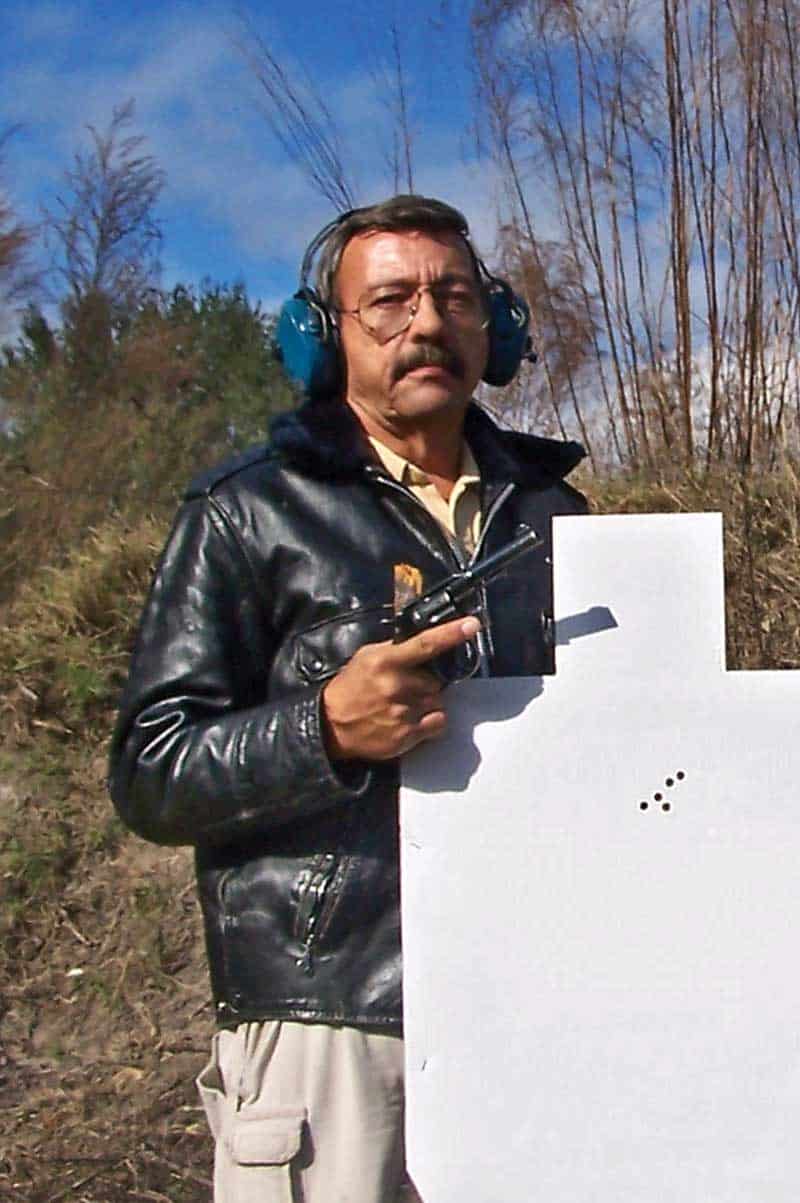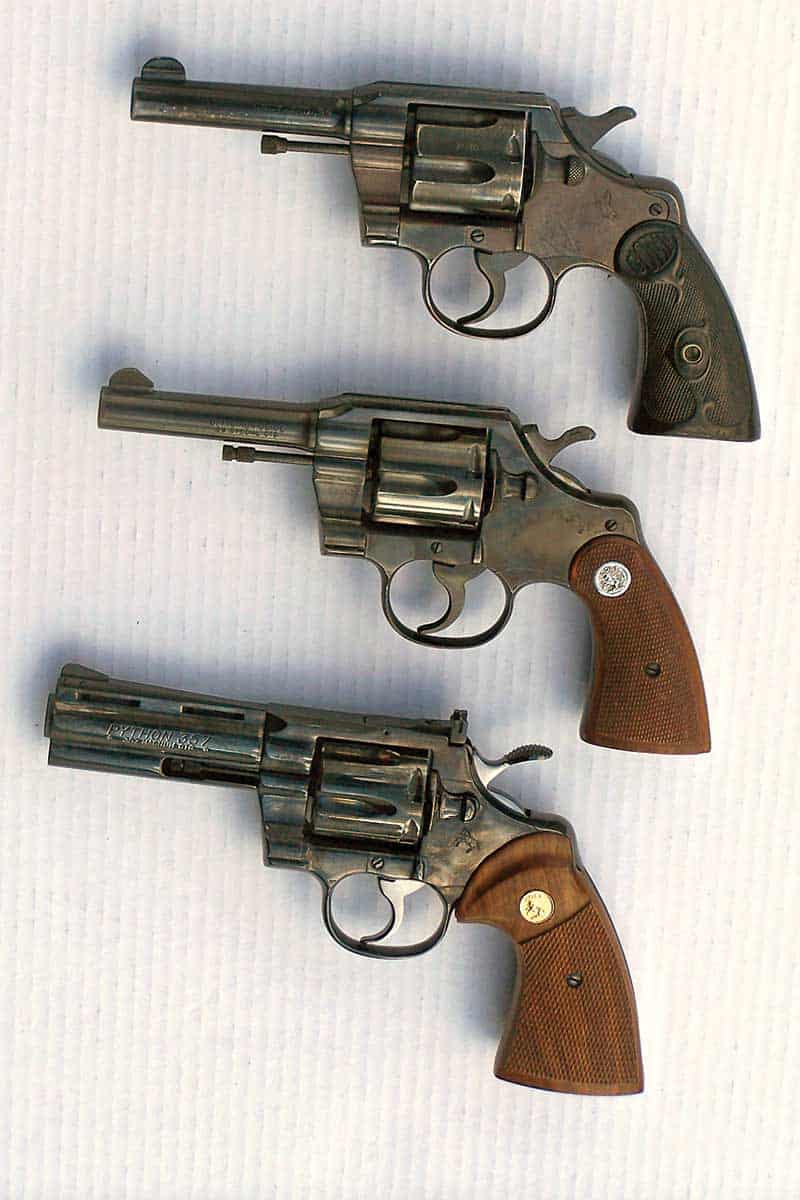Old revolvers can deliver the goods!
Posted: Fri Nov 04, 2022 2:36 am
I'm posting this as a continuation of this thread: viewtopic.php?f=22&t=28860
My intent is not to try and convince anyone to do what I do or like what I like. I only would like to share something that may be of interest to those who like guns, and to those who might be considering the purchase of a gun and would like to know more about what is available.
I recognize that the gun this article discusses may not be common in India, and that 38 Special ammunition has issues with availability and price. Still, I believe that there's value in reading this article for the person who is interested in guns, and also to someone who may find this particular gun might meet their needs, and that they have the possibility of care and feeding of such a beast.
This article is by Massad Ayoob, who is a noted expert on defensive techniques and who has served as an expert witness in many criminal trials. He knows what he's talking about, in other words!
A note: he's pictured with a Colt Army Special with a 4 inch barrel. Mine is a bit older and has a 6 inch barrel. Click on the pictures to make them larger.
My intent is not to try and convince anyone to do what I do or like what I like. I only would like to share something that may be of interest to those who like guns, and to those who might be considering the purchase of a gun and would like to know more about what is available.
I recognize that the gun this article discusses may not be common in India, and that 38 Special ammunition has issues with availability and price. Still, I believe that there's value in reading this article for the person who is interested in guns, and also to someone who may find this particular gun might meet their needs, and that they have the possibility of care and feeding of such a beast.
This article is by Massad Ayoob, who is a noted expert on defensive techniques and who has served as an expert witness in many criminal trials. He knows what he's talking about, in other words!
A note: he's pictured with a Colt Army Special with a 4 inch barrel. Mine is a bit older and has a 6 inch barrel. Click on the pictures to make them larger.
from: https://gunsmagazine.com/wheelgun-wedne ... al-police/THE COLT OFFICIAL POLICE
61 YEARS OF PRODUCTION, 99 YEARS OF SERVICE.
WRITTEN BY MASSAD AYOOB
Mas’ glee is evident as he found this ancient Colt Army Special with gutta percha grips could still
deliver a 1.75" group, handheld from the bench at 25 yards.
A buddy of mine came by today with a Colt Official Police he’d recently purchased. I dug out my old Army Special, the OP’s predecessor, and we had a fine blast blasting with blasters of the past. Turned out my ancient (1922) sixgun would still put five rounds of modern Winchester USA 130-grain practice ammo into 13⁄4″ at 25 yards, with the best three in 4/5″, even with its long obsolete knife-blade front sight and V-notch rear.
Colt got the jump on its archrival Smith & Wesson with the first swing-out cylinder in the year 1889, and in 1892, offered the Army Model in .41 and .38 Long Colt. Thus began the long tradition of modern Colt service-size revolvers being built on a .41 frame. In 1908, losing sales because the 1892 looked dated and felt rickety by comparison to the S&W Military & Police of 1899, Colt refined the mechanism and updated the outer sculpturing: the result was the Army Special. In the .38 Special S&W introduced in 1902, the new Colt quickly became the predominant police service revolver in the nation.
By 1927, with virtually none of those guns sold to the military, but having been so warmly accepted by the law enforcement establishment, Colt changed the name of the Army Special to Official Police. There was virtually no other change. In 1930, S&W introduced their N-frame .38-44 Heavy Duty, chambered for a .38 Special cartridge closer to +P+ than +P, though neither term was in use then. Smith warned conspicuously this hot ammo was not to be used in their standard service-size revolver, the Military & Police. Colt immediately and smugly announced that it would work just fine in their standard-frame service revolver, the Official Police. It was a small but undeniable marketing coup … and the last the OP would have. When WWII came along, S&W Parkerized their M&P for military use and dubbed it the Victory Model. Colt did the same to the OP and christened it the Commando, though they sold far fewer to government entities and most wound up in the holsters of guards at defense plants.
The Army Special was the predecessor of the Official Police and the only real change in 1927 was the name.
The Colt Army Special, 1908-1927 (top, this one, caliber .38 Special, produced circa 1922) and Colt Official
Police, 1927-1969 (bottom, late ’50s to 1960s production). The front sight configuration of the OP was
changed in mid-1950s.
Postwar
After WWII, the gap between the two brands started closing. When I was a little guy in the 1950s, cops in the three largest cities in the state where I grew up carried the 4″ Official Police as standard issue. (State troopers, how-ever, carried 6″ pre-model 27 Smith & Wesson N-frame .357 Magnums.) Before the end of the ’60s, though, only the third largest city packed Colts, and they had gone to Trooper .357s. The troopers still wore Smiths, and so did the city cops in the two largest communities. (Interestingly, all four of those agencies would end up with Ruger .357s before they switched to autoloaders, but that’s another story.)
What had changed? Pre-war, cops for the most part shot their qualifications as single-action bull’s-eye marksmanship. By the end of WWII, most were following the FBI into combat-oriented training, double action on silhouette targets. These Colt revolvers’ single action cocking stroke was much more efficient than S&W’s, and that’s why the fancy version of the Official Police with adjustable sights, known in various incarnations as the Officer’s Model or Officer’s Model Match, simply ruled the centerfire stages at Camp Perry.
However, in double action work, the S&W was found to have a smoother pull, and a more consistent one. It didn’t “stack,” or grow heavier, toward the end of the stroke, and the Colts did. Circa 1960, Colt sponsored the first National Championships of police combat shooting in Indiana. They dropped out when they realized S&Ws were winning the double action-intensive matches.
In 1955, Colt improved the sights (made ’em bigger and blockier, with 1/8″-wide front and good square-cut rear notch), and even offered a round-butt version called the Marshal. The Colt Marshal made it only through 1956, with a mere 2,500 sold, and is a collector’s item today. In ’55, Colt also evolved the OP action, already refined into the internal-firing-pin Trooper of 1953, into the classic and trendsetting Python.
Meanwhile, S&W was improving their quality while Colt’s was slipping. The Smith came with a gorgeous blue finish and handsome Magna grips. Colt cheapened their product with dull gray finish on topstrap and backstrap, and even went to cheesy plastic stocks they called “Coltwood.” Yet by 1961, a S&W Military & Police (by then known as the Model 10) cost only $65 suggested retail, while the cheapened Colt carried a price tag of $77.50.
The handwriting was on the wall. S&W by then had vaulted into the lead in the police market, and the same thing was happening with the civilian market for double-action revolvers. In 1969, stating it was economically impossible to compete at price-point and keep their famous old-fashioned quality, Colt discontinued the Official Police revolver. It had been produced over the years in calibers including .22 Long Rifle, .32/20, .41 Colt and —predominantly — .38 Special.
Colt landmarks (top to bottom) include Army Special (introduced 1908), Official Police (1927) and Python (1955).
The OP Today
More than 35 years since its demise, the Colt Official Police remains with us. Firearms are the most durable goods this side of jewelry, after all, and the OP’s rich heritage makes it attractive to gun enthusiasts like the friend I was shooting with today.
Movie buffs recognize it instantly. The Official Police was the gun Humphrey Bogart and his crew carried in Treasure of the Sierra Madre, the gun the cop fired at Jimmy Stewart in It’s a Wonderful Life, the gun a luckless adventurer fired at a brontosaurus in the original King Kong before he realized he should have “used enough gun.” On TV, the Official Police was the duty weapon of cops from Don Knotts as Mayberry’s Barney Fife to Robert Stack and his whole crew of The Untouchables. This rugged, heavy-duty .38 Special left an imprint on the collective American consciousness.
And, quite apart from reel life, it did its job in real life. A Colt Official Police in the hands of courageous, mortally wounded White House guard Leslie Coffelt killed an attempted assassin of Harry Truman in 1950. Decades later, there was a Colt Official Police in the hands of the NYPD officer who forced Mark David Chapman to surrender at gunpoint after he had murdered John Lennon.
Today, I still see the occasional Colt Official Police on the hip of a graying Chicago copper, and there are probably still a handful on the hips of New York’s Finest. Thousands of OPs still serve as personal defense, home defense and store defense guns for armed citizens. Ninety-nine years of protecting Americans is not a bad legacy. When you hold an Official Police, you hold a piece of history.


